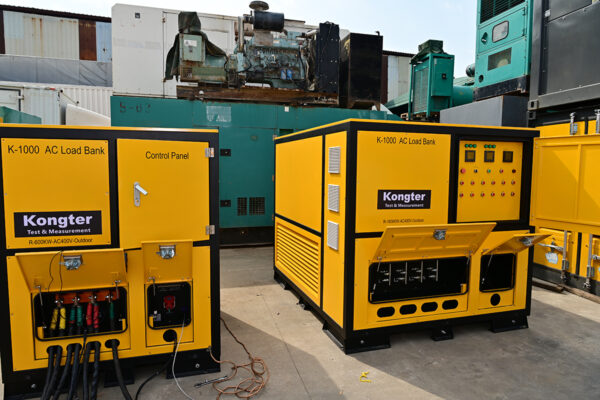Load banks are used to simulate various electrical loads for testing and maintaining power sources and electrical systems. The key difference among R (Resistive), RLC (Resistive-Inductive-Capacitive), RCD (Resistive-Capacitive-Inductive), and RL (Resistive-Inductive) load banks lies in the type and combination of electrical loads they simulate:
Resistive Load Bank (R):
Load Type: Purely resistive load.
Purpose: Simulates resistive loads like heaters, incandescent lights, or heating elements.
Applications: Used for testing and maintaining electrical systems where the load primarily consists of resistive components, such as testing generators, UPS systems, or power distribution systems.
RLC Load Bank (Resistive-Inductive-Capacitive):
Load Type: Combination of resistive, inductive, and capacitive loads.
Purpose: Simulates a balanced load with resistive, inductive, and capacitive components to test the complete performance of power sources and equipment.
Applications: Used for testing uninterruptible power supplies (UPS), power factor correction systems, and equipment that experiences a mix of resistive, inductive, and capacitive loads.
RCD Load Bank (Resistive-Capacitive-Inductive):
Load Type: Combination of resistive, capacitive, and inductive loads, typically with capacitive elements leading.
Purpose: Simulates loads with a capacitive leading power factor (leading the voltage) to test power systems with leading power factor conditions.
Applications: Used to test power factor correction systems, power distribution equipment, and power sources where capacitive leading loads are prevalent.
RL Load Bank (Resistive-Inductive):
Load Type: Combination of resistive and inductive loads.
Purpose: Simulates loads with inductive components to test the performance and response of electrical systems to inductive loads.
Applications: Used for testing electrical systems where inductive loads are predominant, such as motor-driven equipment or transformers.
These load banks are used in various applications to verify the performance and reliability of electrical systems and equipment. The choice of load bank depends on the specific requirements of the testing and the characteristics of the power source or system being tested.
For comprehensive testing that closely replicates real-world conditions, a combination of resistive, inductive, and capacitive loads (RLC) may be used. However, the choice ultimately depends on the specific electrical characteristics and load profiles relevant to the application.
Kongter is dedicated to different load bank models that are customer-tailored with very flexible choice of load bank models. It is best choice of supplier for various types load banks.

